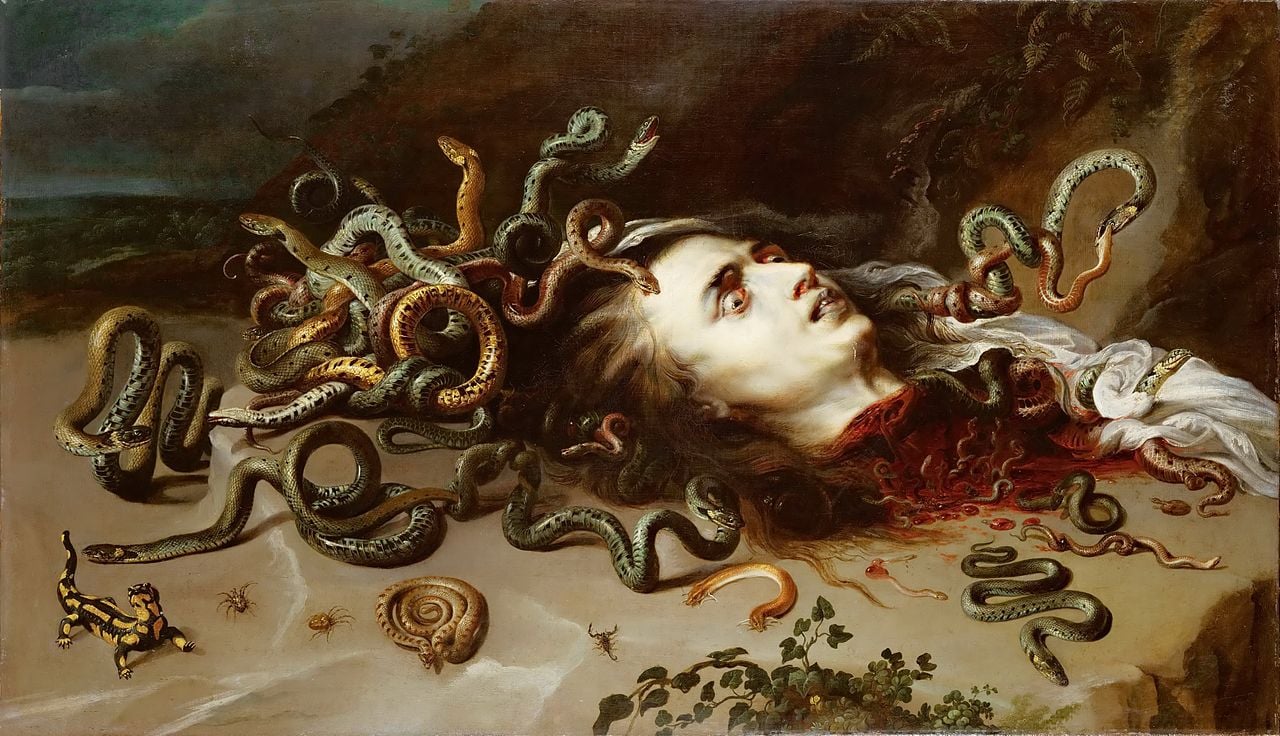
Two mosaics depicting the Greek mythological figure Medusa were recently found at an ancient Roman villa by American archaeologists.
In Greek mythology, Medusa is one of the three Gorgons. According to the myth, Medusa has hair made of serpents and turns anyone who looks at her into stone.
A LiveScience report citing a presentation at the annual meeting of the Archaeological Institute of America meeting in January 2023 explained that in both mosaics, Medusa appears to be looking off into the far distance.
The mosaics, according to LiveScience, were found in the Villa of the Antonines in Rome, Italy and date to the second century CE. The site has been in the process of excavation by the Montclair State University Archaeology Field School in recent years.
While archaeologists are not sure exactly what this room with two medusa mosaics was used for, it “definitely must have been quite impressive to enter the room,” said Deborah Chatr Aryamontri, associate professor of classics and general humanities at Montclair State University to LiveScience in an interview.
“Finding those mosaics [was] a pleasant surprise,” Chatr Aryamontri said. She told LiveScience that most of the villa’s more magnificent pieces were removed in the 18th and 19th centuries.
It seems that depictions of Medusa were very popular in ancient Rome. At the Greek necropolis complex at Sanita, just outside Naples, Medusa is the only free-standing sculpture (pictured at the top).
One room at the necropolis is presided over by the Medusa whose job it is to scare off all the evil spirits who might disturb the souls of the deceased.
Medusa, the fearsome figure of Greek mythology

The representation of females in Greek mythology, including the Gorgon Medusa, has often included frightening images and ideas showing men’s fear of female power and their need to control or even destroy this power.
Like the monsters Scylla and Charybdis, as well as the Sphinx, Medusa, the “Gorgon,” was born from the gods herself.
Μέδουσα (as ‘Medusa’ is spelled in Greek), meaning “guardian, protectress,” who was also referred to as Gorgo, was one of the three monstrous Gorgons, generally described as winged human females with living venomous snakes in place of hair. Those who gazed into her eyes would turn to stone.
Most sources describe her as the daughter of Phorcys and Ceto although the author Hyginus refers to her as the daughter of Gorgon and Ceto.
Medusa was beheaded by the Greek hero Perseus, who thereafter used her head which retained its ability to turn onlookers to stone as a sort of weapon until he returned it to the goddess Athena to place on her shield. In classical antiquity, the image of the head of Medusa appeared in the supposedly evil-averting device known as the “Gorgoneion.”
Related: Medusa, the Most Fearsome Figure of Greek Mythology
See all the latest news from Greece and the world at Greekreporter.com. Contact our newsroom to report an update or send your story, photos and videos. Follow GR on Google News and subscribe here to our daily email!



